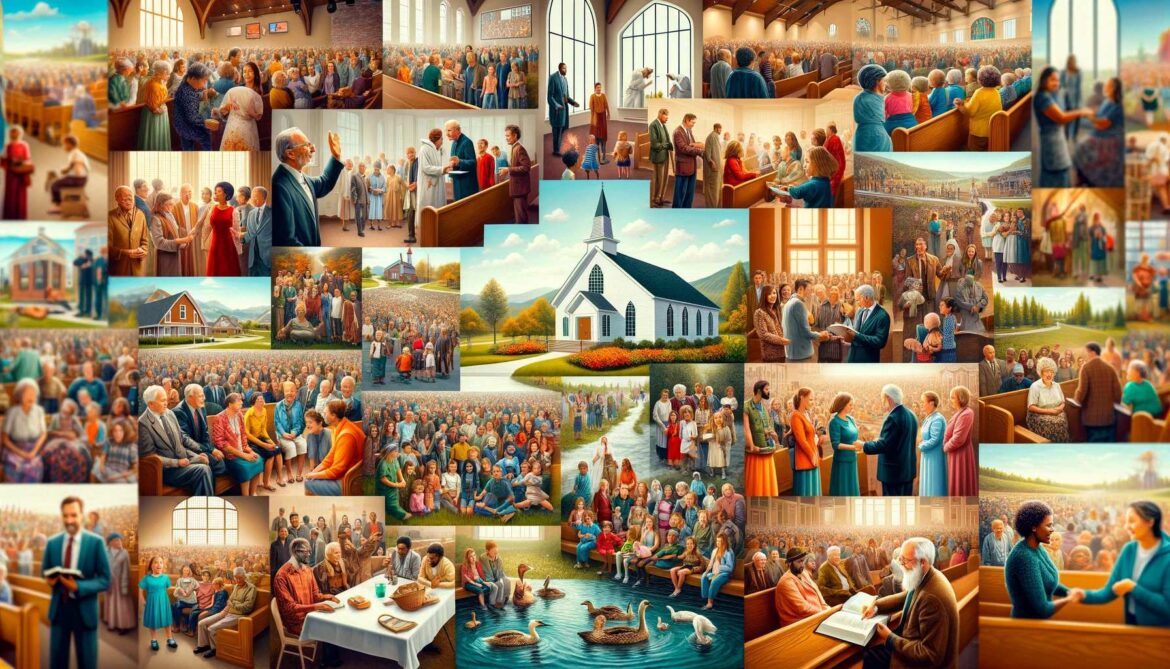In the vibrant mosaic of American society, the question, “How many churches are there in the United States?” emerges as one that can evoke a diverse array of answers. This inquiry, student of tradition versus modernity and skeptic versus faithful alike, begs for thoughtful consideration. But before we dive into numbers, let’s ponder: does the sheer quantity of churches truly define the spiritual health of a nation? What does it mean to be church in today’s context, especially under the lens of contemporary Christian thought?
As we explore the landscape of ecclesiastical presence in the U.S., an examination of statistical data often serves as a springboard. Recent estimates suggest that the country is home to anywhere between 300,000 to 400,000 churches. This number includes a kaleidoscope of denominations, from the majestic cathedrals of Catholicism to the humble meeting houses of evangelical groups. The mere mention of such a substantial figure prompts one to consider: what does this proliferation of houses of worship signify? Are we witnessing a flourishing of faith or simply the fragmentation of it?
One must consider the historical evolution of churches within the U.S. context. The foundation of religious freedom laid by the Founding Fathers allowed for myriad sects to flourish, nurturing a distinctively pluralistic society. This diversity presents an intriguing paradox; while there may be multitudes of churches, the American spiritual landscape is not monolithic but rather reflects varying interpretations of Christianity itself. Churches thrive as bastions of community, yet the proliferation raises questions about unity and division within the Body of Christ.
To illustrate, one can look to the **Evangelical** sector, which has seen significant growth in recent decades. These churches often spring from a commitment to personal salvation and scripture’s inerrancy. Additionally, the **Mainline Protestant** denominations, once considered the backbone of American Christianity, have witnessed a steady decline. Conversely, newer movements and **non-denominational** congregations have taken root, indicating a shifting paradigm. Should one, therefore, measure the strength of Christianity by numbers alone, or by the depth of faith and community engagement?
As we contemplate these figures, it is essential to highlight the **American church’s relationship with culture**. The divide between secularism and spiritualism appears to be widening. Numerous congregations have adeptly adapted to modernity, utilizing technology and social media to reach the unchurched and engage believers. This adaptation isn’t merely a transactional relationship; it represents an endeavor to reclaim the relevance of church in a digital age that is often perceived as both isolating and liberating.
Let us also examine the concept of church beyond brick and mortar. Recent studies indicate that a substantial number of Americans identify as spiritual but not religious. This nuance begs another question: do these individuals constitute a new form of church? The community gathering in homes, coffee shops, and online spaces signifies an emerging trend toward **organic church communities** that emphasize connection over institution. The church, therefore, may not merely be represented in its physical form but also in a multitude of gathered believers, irrespective of traditional structures.
The role of the church in addressing societal issues further complicates the narrative around its numbers. Churches have historically been agents of social change and morality. Today, many church bodies engage actively in matters of social justice, compassion, and community service. This mission-driven approach illustrates a burgeoning awareness that the church’s role transcends the spiritual domain—it intersects with the everyday life of people. Shouldn’t we be measuring the efficacy of churches by their impact rather than their proliferation?
However, challenges loom on the horizon as congregations struggle with declining attendance in many areas. While the raw numbers of churches remain impressive, the participation rates paint a sobering picture. A staggering number of churches face shutdown or consolidation as communities evolve, populations shift, and the cultural importance of regular worship diminishes. This decline may well indicate a need for introspection: are churches meeting the spiritual needs of contemporary society?
In this light, the landscape of churches in America offers a dichotomy that is both intriguing and troubling. Some congregations thrive, invigorating their communities through innovative approaches, while others fade quietly into obscurity, lost in the transition of modern life. One could argue that the future of churches rests upon their adaptability—those that embrace change while remaining resolute in their core beliefs tend to flourish, while those resistant to evolving may face existential threats.
As one considers the future of Christianity in a data-driven age, it may be prudent to approach the statistics with a discerning eye. How many churches are merely numbers on a chart, and how many are living communities of faith actively influencing the world around them? The answer lies not solely in counting structures, but in measuring hearts engaged in a relationship with the Divine and with one another.
It is essential to appreciate the ongoing tension between tradition and innovation, belief and skepticism, unity and division. The challenge posed by the question “How many churches are there?” invites us to scrutinize our definitions of church, to speculate about their relevance in an ever-changing landscape, and ultimately, to engage with the pressing call for unity in diversity. For every structure that stands, it is the Spirit that must inspire, connecting hearts across denominations and geographical boundaries, driving believers toward a shared mission that transcends numbers.



